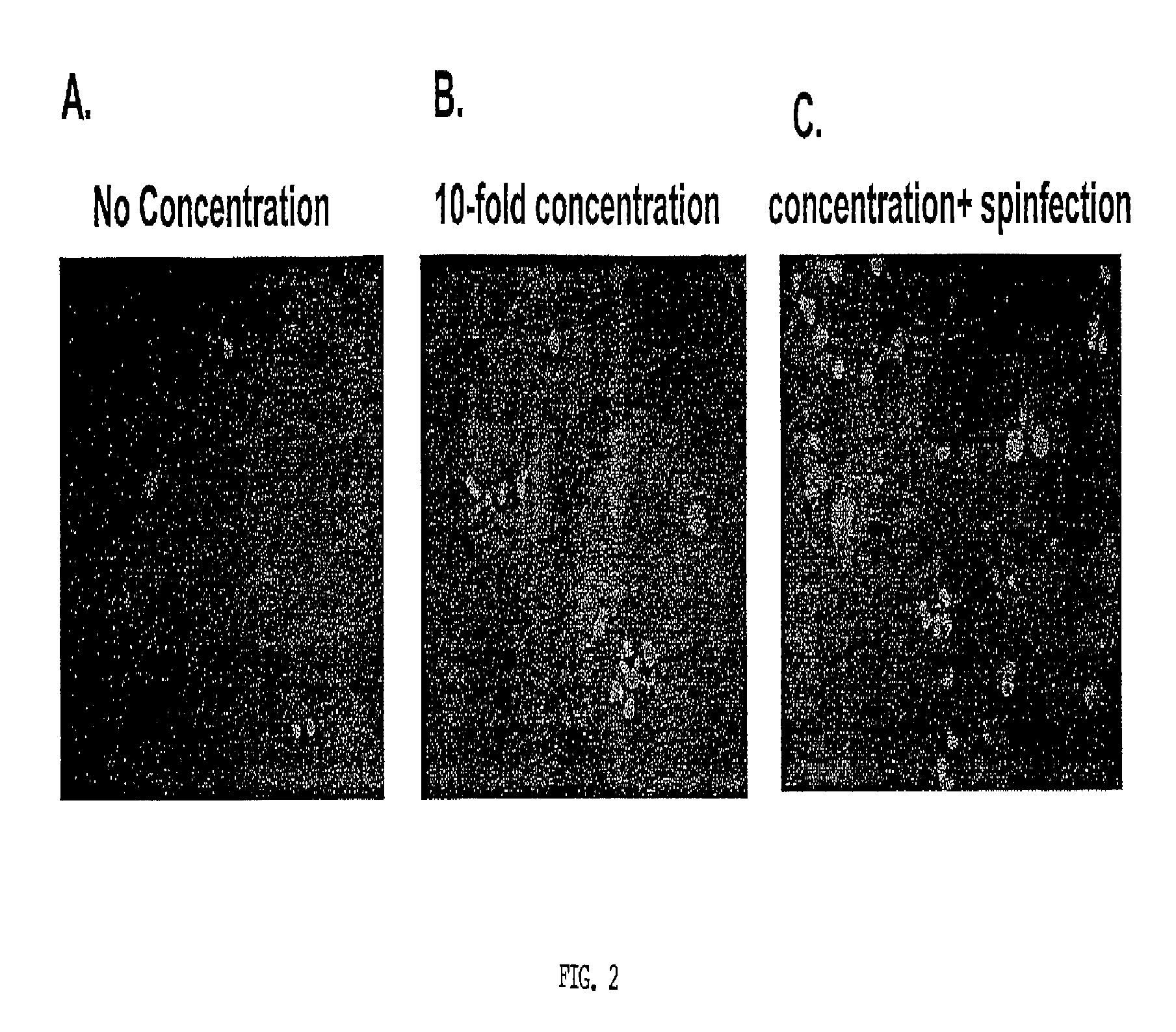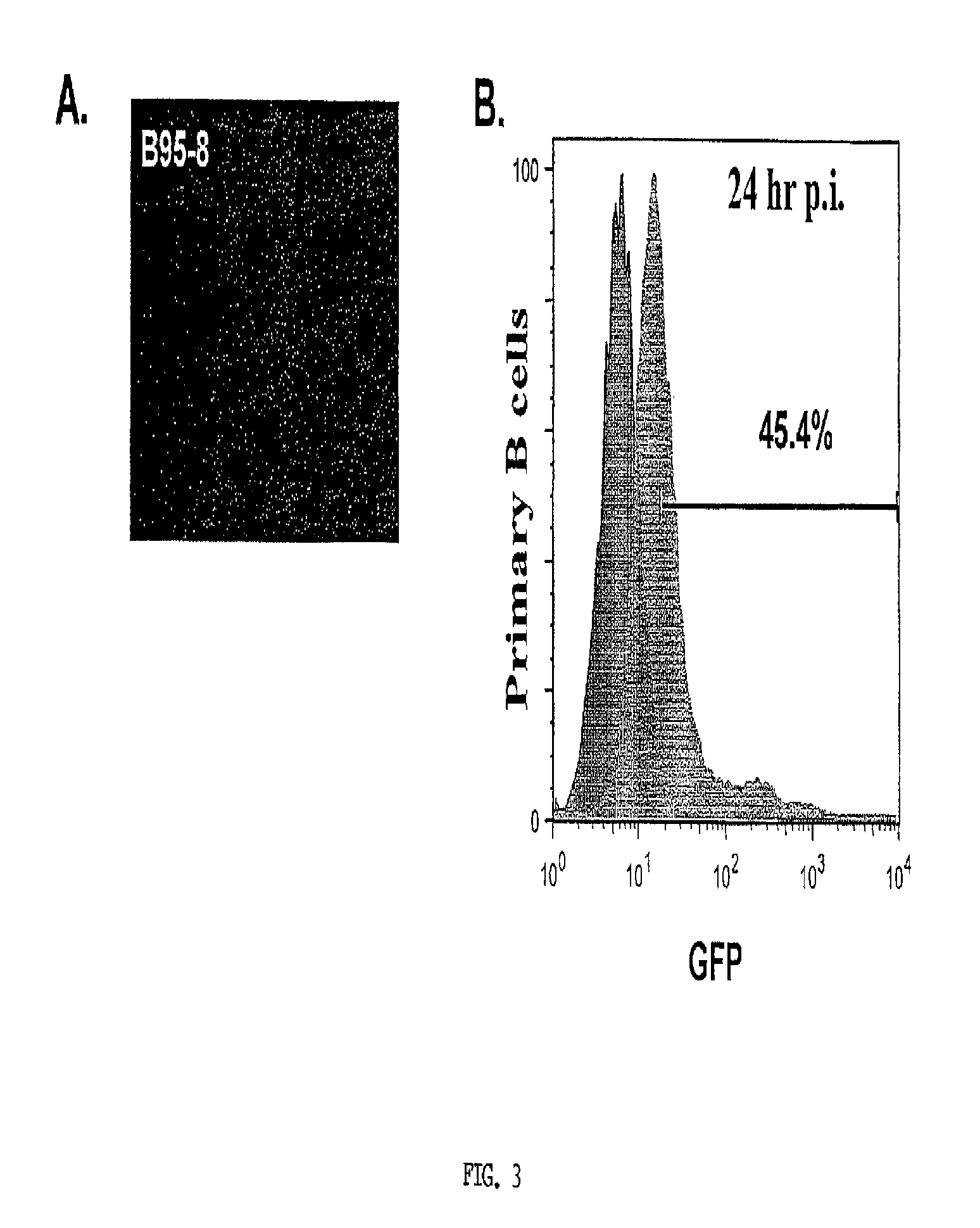Human monoclonal antibodies and methods for producing the same
a monoclonal antibody and human antibody technology, applied in the field of cell biology and immunology, can solve the problems of “serum sickness, large time and expense for humanizing antibodies, and untapped potential for therapeutic and diagnostic agents
- Summary
- Abstract
- Description
- Claims
- Application Information
AI Technical Summary
Benefits of technology
Problems solved by technology
Method used
Image
Examples
example 1
Materials & Methods for B-Cells Reactive to H5 HA
[0150]Isolation and culture of tonsil B cells. To prepare B cells from tonsils, tonsil tissue was placed inside a sterile Petri dish (VWR International, cat. #25384-088) containing 20-30 ml Dulbecco's phosphate buffered saline (DPBS, without CaCl2 or MgCl2; Gibco / Invitrogen, Grand Island, N.Y. cat. #14190144) supplemented with 1× Antibiotic-Antimycotic (Gibco / Invitrogen cat. #15240-062). The tissue was chopped and minced with scalpels to approximately 1 mm3 pieces. Additional lymphocytes were released by gentle grinding of tonsil pieces between the frosted glass surfaces of two sterile microscope slides (VWR cat. #12-550-34), and single cell preparation was made by straining through 70 μm nylon strainer (BD Falcon, cat. #352350, BD Biosciences, Two Oak Park, Bedford, Mass.). This suspension was layered onto a Ficoll (Amersham Biosciences cat. #17-1440-03, Uppsala, Sweden) cushion (35 ml sample over 15 ml Ficoll) and resolved at 1500 G...
example 2
Results for B Cells Reactive to H5 HA
[0169]Toll-Like Receptor (TLR) ligands and EBV concentration did not significantly improve EBV infectivity. Traggiai et al. (2004) reported that addition of at least one TLR ligand (CpG) to cultured memory B cells could enhance EBV infection efficiency. Since naïve B cells express several TLR (Bourke et al., 2003) it was reasonable to assess the effect of several TLR ligands on EBV infection of naïve B cells. Primary B cells were incubated overnight with either Pam3 (Pam3Cys-Ser-(Lys)4) (0.5 μg / mL), zymosan (1 μg / mL), Poly I:C (polyinosinic-polycytidylic acid) (25 μg / mL), LPS (lipopolysaccharide) (5 μg / mL), Imiquimod (1 μg / mL), CpG (10 μg / mL), or no ligand. These are synthetic proteins that mimic common pathogenic antigens. Each of these activates different innate immune pathways in B-cells. Lipopeptide Pam3 (Hamilton-Williams et al., 2005) binds TLR 2 and 1, zymosan (a yeast cell wall component prepared from Saccharomyces cerevisiae) binds TLR 2...
example 3
Materials & Methods for Producing Human B-Cells Secreting Monoclonal Antibodies Reactive with SEB, SEC-2, PLGF, and Ricin B Chain
[0198]Creation of immortalized tonsil repertoires. Generation of concentrated EBV stocks and preparation of B cells from tonsil tissue have been described in Examples 1 and 2. No changes have been made to these methods. For induction of differentiation of EBV immortalized B cells, the inventors used complete RPMI medium (Gibco) supplemented with 10% FBS (Hyclone) containing soluble CD40 ligand (5 ng / ml), BAFF (10 ng / ml), and goat anti-human IgM F(ab′)2 (1.62 ng / ml), as previously described.
[0199]Sample collection for ELISA analysis. Collection and screening of sample culture supernatants for antigen reactivity by ELISA have been modified as follows. Culture supernatants were collected into corresponding wells on a 96-well plate on day 10-14 post-transduction at 100 μl from each well, and aliquots were pooled (30 μl of supernatant from all wells on each pla...
PUM
 Login to View More
Login to View More Abstract
Description
Claims
Application Information
 Login to View More
Login to View More - R&D
- Intellectual Property
- Life Sciences
- Materials
- Tech Scout
- Unparalleled Data Quality
- Higher Quality Content
- 60% Fewer Hallucinations
Browse by: Latest US Patents, China's latest patents, Technical Efficacy Thesaurus, Application Domain, Technology Topic, Popular Technical Reports.
© 2025 PatSnap. All rights reserved.Legal|Privacy policy|Modern Slavery Act Transparency Statement|Sitemap|About US| Contact US: help@patsnap.com



